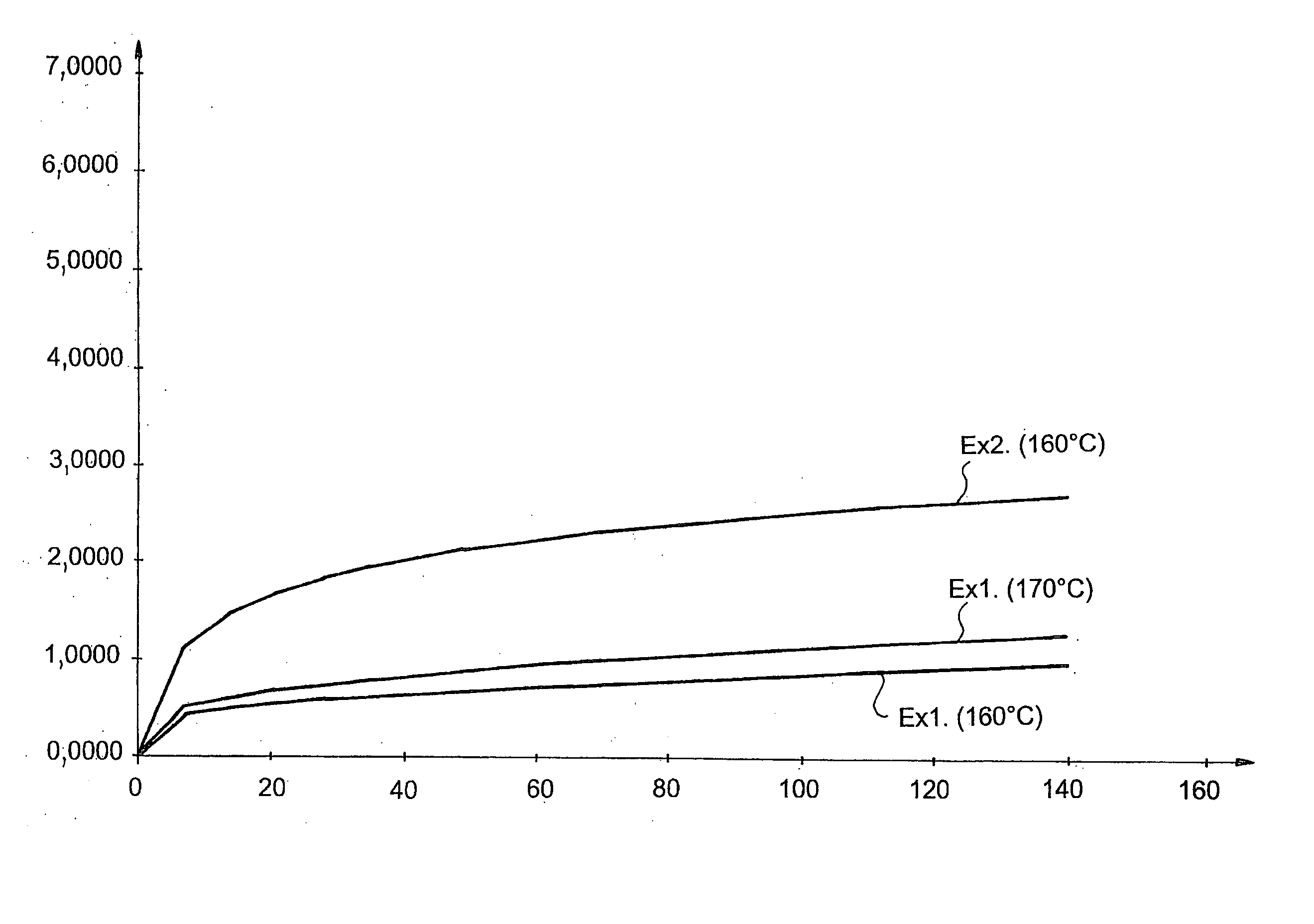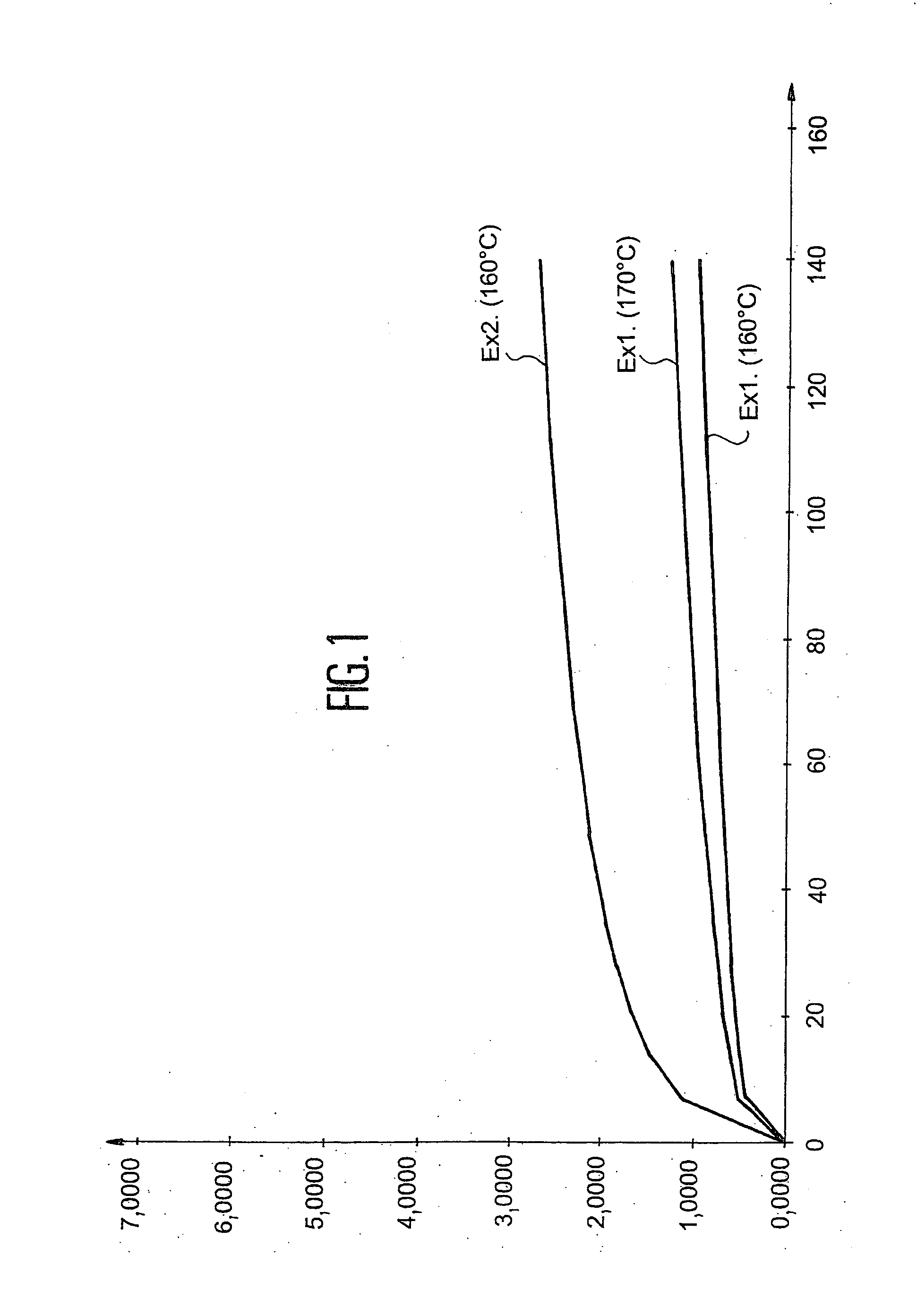Material for neutron shielding and for maintaining sub-criticality based on vinylester resin
a vinylester resin and neutron shielding technology, applied in the direction of electric discharge lamps, instruments, electrical discharge lamps, etc., can solve the problems of mediocre thermal aging resistance, inability to keep a nuclear fuel transport packaging subcritical, unsaturated polyester resin,
- Summary
- Abstract
- Description
- Claims
- Application Information
AI Technical Summary
Benefits of technology
Problems solved by technology
Method used
Image
Examples
example 1
[0073] A polymerisable mix is prepared from Derakane Momentum 470-300 vinylester resin, styrene, zinc borate Zn2O14,5H7B6 and magnesium hydroxide using the proportions given in table 1 in the appendix.
[0074] The following constituents are added to the mix: [0075] 1% by weight, relative to the mass of resin+styrene, of the 55028 accelerator marketed by Akzo, and [0076] 2% by weight relative to the mass of resin+styrene, of the Butanox M50 catalyst (methylethyl cetone peroxide) marketed by Akzo.
[0077] The next step is vacuum degassing of the mix for 3 minutes followed by pouring the mix into a mould composed of a compartment of a nuclear fuel transport or storage packaging.
[0078] The gel time is 22 minutes at 20° C.
[0079] The result is a composite material with the following properties: [0080] density: 1.697 [0081] hydrogen content: 4.72% by weight, namely 4.78×1022 atoms / cm3′[0082] boron content: 0.97% by weight, namely 9.17×1020 atoms / cm3.
[0083] The material obtained has satisf...
example 2
[0095] The same operating method is used as in example 1, using the constituents and proportions given in table 1.
[0096] The mix also includes: [0097] 0.9% by weight relative to the mass of resin, of the accelerator NL 49P marketed by Akzo, and [0098] 1.5% by weight relative to the mass of resin, of the Butanox M50 catalyst marketed by Akzo.
[0099] Setting takes place at ambient temperature and after 25 minutes, a material with the following characteristics is obtained: [0100] density: 1.79 [0101] hydrogen content: 4.80% by weight, namely 5.14×1022 at / cm3, [0102] boron content: 0.89% by weight, namely 8.92×1020 at / cm3.
[0103] The material obtained has satisfactory thermal properties.
[0104] The thermal coefficient of expansion a measured by DSC (METTLER) with a temperature rise of 10° C. / min gives the following for the material: [0105]α: 37×10−6 K−1 between 20 and 130° C., and [0106]α: 109×10−6 K−1 above 130° C.
[0107] The specific heat Cp is measured by differential enthalpic anal...
example 3
[0116] The same operating method is used as in example 1 to prepare a material for neutron shielding and maintenance of sub-criticality, from the following mix:
Derakane Momentum 470-32% by weight300 vinylester resinzinc borate13% by weightboron carbide B4C15% by weightalumina hydrate40% by weight
[0117] The mix also comprises: [0118] 0.9% by weight relative to the mass of resin, of the NL49P accelerator, and [0119] 1.5% by weight relative to the mass of resin, of the Butanox M50 catalyst.
[0120] Setting takes place at ambient temperature; a material with the following characteristics is obtained after 25 minutes: [0121] density: 1.8 [0122] hydrogen content: 4.03% by weight, namely 4.34×1022 at / cm3, and [0123] boron content: 13.68% by weight, namely 1.37×1022 at / cm3.
[0124] Considering its high boron content, the material in example 3 has excellent efficiency in maintaining sub-criticality.
[0125] Thus, the material according to the invention has very attractive properties for neutr...
PUM
| Property | Measurement | Unit |
|---|---|---|
| temperature | aaaaa | aaaaa |
| viscosity | aaaaa | aaaaa |
| temperature | aaaaa | aaaaa |
Abstract
Description
Claims
Application Information
 Login to View More
Login to View More - R&D
- Intellectual Property
- Life Sciences
- Materials
- Tech Scout
- Unparalleled Data Quality
- Higher Quality Content
- 60% Fewer Hallucinations
Browse by: Latest US Patents, China's latest patents, Technical Efficacy Thesaurus, Application Domain, Technology Topic, Popular Technical Reports.
© 2025 PatSnap. All rights reserved.Legal|Privacy policy|Modern Slavery Act Transparency Statement|Sitemap|About US| Contact US: help@patsnap.com



